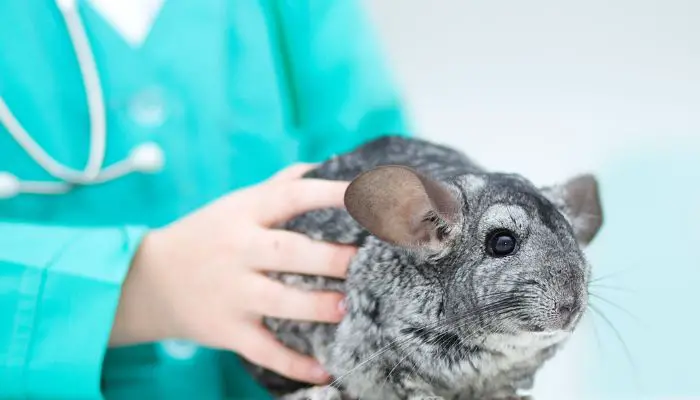Can Chinchillas Get Mites?
The answer is Yes, Can Chinchillas Get Mites.

Mites are tiny, external parasites that live in chinchillas. They cause a lot of discomfort for chinchillas and if left untreated, can cause death.
Mites are usually found on the underside of the chinchilla’s ear. They can cause irritation and infection if they’re not removed.
To prevent mites, you should wash your hands before handling chinchillas. It is also important to regularly check their ears for mites and remove them if they are found.
Chinchillas can get mites from each other, and from the environment.
You can help prevent mite outbreaks by cleaning cages, keeping floors clean, and using insecticide sprays.
If you notice signs of mite infestation, consult a vet.
How do I know if my chinchilla has mites?
Chinchillas can get mites, just like cats and dogs.
If your chinchilla has white spots on his coat, it may be due to a skin disease called demodectic mange. Demodectic mange is a chronic, contagious disease caused by mites.
These mites burrow under the chinchilla’s fur and feed off of him, causing irritation and sores.
Chinchillas are very sensitive creatures and often get the same kinds of skin conditions as dogs and cats.
You can identify the presence of demodectic mange by examining your chinchilla’s skin and hair.
1) Examine your chinchilla’s coat.
Look for white dots or patches on your chinchilla’s fur.
These are the mites.
2) Check your chinchilla’s skin.
Examine your chinchilla’s skin.
Look for sores, crusts, or scabs.
3) Check your chinchilla’s head.
Examine your chinchilla’s head.
Look for bald spots.
If you notice any signs of mange, consult your veterinarian.
How to Treat Mites in Chinchillas
to identify and remove the mite infestation from your chinchilla’s fur. You must be extremely careful not to spread the infestation to other chinchillas. You can use a product called Avitrol to remove the mite infestation from your chinchilla’s fur. It will kill the mites and prevent them from spreading to other chinchillas.
To do this, apply the Avitrol to the affected area of your chinchilla’s coat. You should do this while the mite infestation is at its peak, usually around 4 weeks after the chinchilla has been brought home from the breeder.
The chinchilla should be sedated during the procedure to ensure that it is completely comfortable. You can use a product called Kwik-Stik to help you sedate your chinchilla. You should also be wearing protective gloves to protect you from the mites and their feces.
After the mites have been removed, your chinchilla should receive a good cleaning and disinfecting. You should also bathe your chinchilla thoroughly with a product called Aquaphor. Bathing your chinchilla regularly will help keep her skin healthy.
Your chinchilla will probably need to have a flea treatment applied to her in order to prevent any fleas from returning. The product you use should be applied directly to the chinchilla’s head.
You should also make sure that your chinchilla’s cage is clean and disinfected. If there is anything that needs to be cleaned, you should do so.
If your chinchilla has any symptoms of mite infestation, such as scratching or hair loss, it is important that you take him to the vet for a proper examination.
If your chinchilla does not respond to treatment, you may need to seek the advice of a vet.
